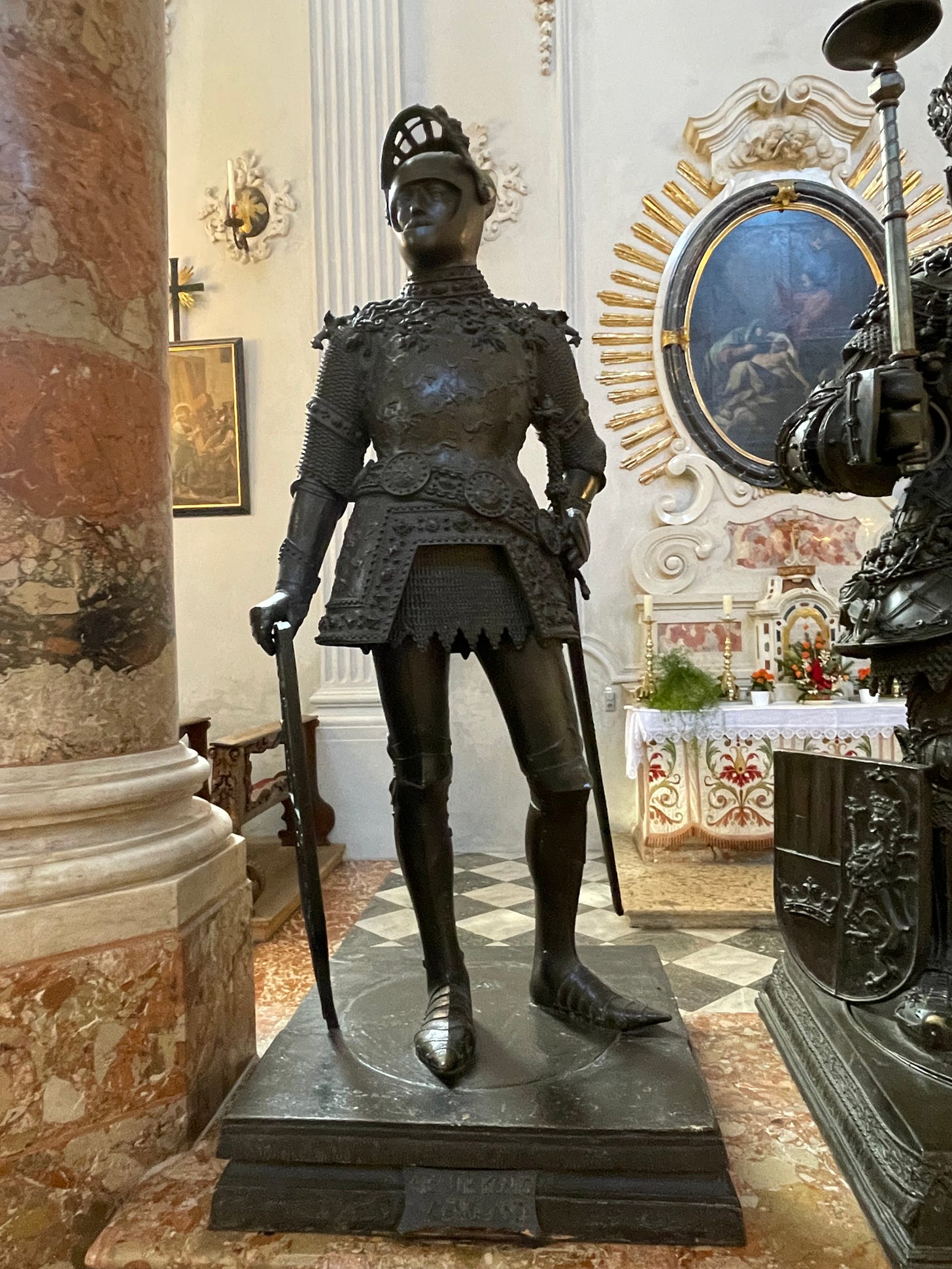Quote of the week
It is a far greater happiness to obey no one than to rule the whole world.
Queen Christina of Sweden
Hello,
It is getting closer to Christmas and decorations are in full swing. Not really at my house since we are going to Portugal for the holidays. Really looking forward to the trip. Not the best weather, but warmer than in Sweden anyway. We have Lisbon and Porto on the list, and I am sure there will be a few other, interesting places to visit.
I am thinking of taking you for a ‘guided’ tour this week. It could come in handy for those visiting Austria and Innsbruck. The ski season are upon us. Innsbruck’s old city tells the tale of a magnificent past. Just to stroll around the small, cobbled streets is a treat, maybe stop for a glühwein, or something to eat. Just outside the tower on Hofgasse lies Hofkirche (the Court Church). Let’s go inside and see what it offers.
Hofkirche
Emperor Maximilian I
The Hofkirche (Court Church) is a Gothic church built in 1553 by Emperor Ferdinand I (1503–1564) as a memorial to his grandfather Emperor Maximilian I (1459–1519). The middle of the church is taken up by Maximilian’s cenotaph with images depicting his life. He is buried in a simple tomb in Wiener Neustadt, and since the cenotaph did not fit into the castle chapel, it was put in the Hofkirche. The construction took more than 80 years, and the sarcophagus itself was completed in 1572. The tomb is enclosed by a beautiful wrought iron grille.
Around the cenotaph is a collection of twenty-eight magnificent Renaissance bronze statues, of ancestors, relatives and heros. They are delicately made and you see every single fold in their dresses, every detail of the jewellery, arms etc. Quite amazing. Several artists were involved in the creation of which Albrecht Dürer is the most famous one. It took them 53 years to finalise. There is even a statue of King Arthur in all his glory. Well worth a visit.
Queen Christina of Sweden
On 24 December 1654, Queen Christina of Sweden abdicated. She left Sweden to go to Brussels where she converted to the Catholic faith. Her conversion was not declared in public, since she was still awaiting an answer from the Swedish government concerning her alimony.
In September, she left Brussels for Italy, travelling via Innsbruck, where she officially announced her conversion to Catholicism. The event took place in the Hofkirche on 3 November 1655. In the church there is a plaque commemorating this event.
When visiting the city archives of Innsbruck, I found a few notes from her visit. Christina was not a very discreet person, had high thoughts of herself and certainly thought someone else should pay for the honour of hosting her. It is said that the Archduke of Austria, Ferdinand Charles, who already had troubled finances, was almost ruined by her visit.
Christina arrived on 31 October 1655 with an entourage of 255 persons and 247 horses, and was housed in the palace. During her stay she went out riding in the surroundings, visiting Ambras castle and enjoyed the treasure, armoury, art gallery and library. Together with the court she visited the Jesuit church for a mass. In the evening there was a performance of the Italian opera L’Argia. The performance lasted six and a half hours from nine in the evening to two thirty in the morning. One day was dedicated to ball games and in the evening another performance of the same opera. One has to admire the stamina of people in those days.
On the 8 November 1655, Christina took her entourage and left Innsbruck on her way to her new life in Rome. I guess the host, and maybe the whole court, were rather happy when she left.
That is all for this week. Next week, I hope to have a few things from Lisbon to talk about.
Links
My blog;
The Content Reader, (in English) where I write about books
You can leave a comment in the post or send an e-mail to thecontentreadernewsletter(at)gmail.com







